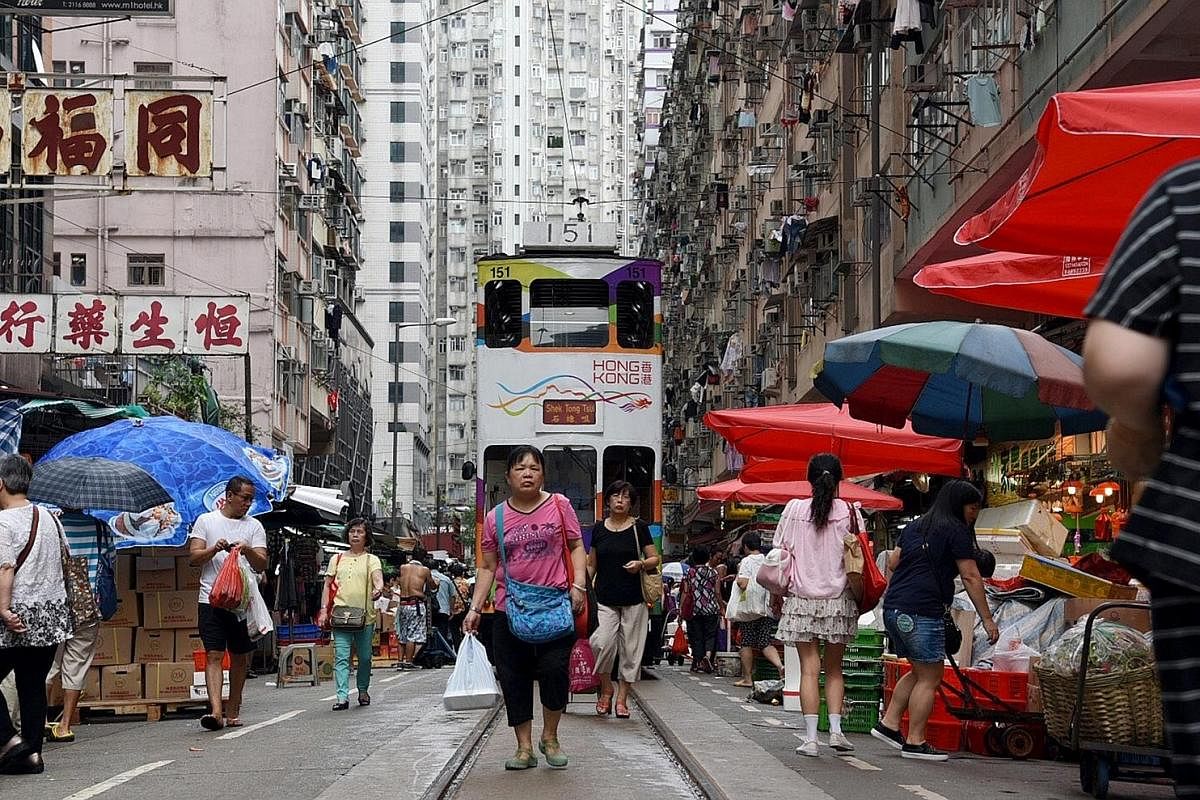End of the road for Hong Kong's trams?
The territory's iconic mode of transport, facing competition from faster options, is going the extra mile to stay in service

HONG KONG • It is a streetcar called desire for many tourists to Hong Kong who do not find that their trip is complete without at least one ride on its iconic tram.
Even in a place where the efficient MTR train service reigns and taxis are relatively cheap and plentiful, the trams - which have been part of Hong Kongers' lives for more than 110 years - remain a sentimental transport favourite.
But can the charming tourist draw still have a future in the territory, given competition from faster transport options?
Its operator Hong Kong Tramways, which took over the service from Wharf Holdings in 2010, is pulling out all stops to ensure that the trams do not get shunted off the streets any time soon.
The trams, which ply routes on Hong Kong Island and share congested roads with cars, will be rebranded later this month.
Mr Emmanuel Vivant, managing director of Hong Kong Tramways, told local newspaper South China Morning Post that a new logo will be rolled out to update the image of what the territory's residents call ding ding, after the sound of the bell used by the tram driver to alert pedestrians and other road users.
The current logo has been in use since 1974.
An ongoing refurbishment drive has also led to quieter operations - a boon for both riders and those whose homes or offices are located near the tracks - with some of the infrastructure undergoing upgrading.
An app has also been introduced to allow riders to check tram arrival times and the nearest stop via their smartphones - in a nod to the digital age.
Hong Kong Tramways is hoping to ride on all these experiences of going the extra mile for travellers - including adding more air-conditioned trams - to help it enter other transport markets in mainland China and Asia.
Its marketing folks have plenty of history to tap in making their pitch.
Hong Kong's first fleet of single-deck trams was rolled out in 1904, with double-decker types making their debut in 1912 to cope with higher passenger demand.
Today's fleet has since morphed to incorporate snazzier features such as ergonomic seats and LED lights and the colourful trams are a popular vehicle for advertisers.
But despite the high operating costs, the fare - at HK$2.30 (41 Singapore cents) a trip - is Hong Kong's cheapest and the trams - you can book an entire tram for a party tour - are used by about 200,000 people a day.
It is no wonder then that the trams have survived calls for them to be scrapped in the central business district, with some folks pinning traffic congestion on the streetcars since they take up 30 per cent of the road space.
But the public has been firm in its opposition to any proposal to scrap the tram network.
Mr Vivant also told the South China Morning Post: "The fares are very cheap but we don't receive any subsidies from the government while people can use other means of public transport."
But "we have a big responsibility" to preserve the heritage of the trams, he added.
"If you remove trams in Hong Kong, you remove the heart of Hong Kong," he noted.
The quest to stay on track will be the job of Mr Vivant and his team who, earlier this month, had to deal with the fallout of a tram toppling over in Central.
Fourteen passengers were injured and the driver was arrested for dangerous driving.
But, for Hong Kong residents and tourists, this incident is a rare safety blip in the trams' long operating history and the desirable streetcars should not be in any danger of becoming obsolete - for now.
Join ST's Telegram channel and get the latest breaking news delivered to you.
A version of this article appeared in the print edition of The Sunday Times on April 23, 2017, with the headline End of the road for Hong Kong's trams?. Subscribe
